9 Little Things Your Dog Notices About You Every Day And 5 Things They Usually Ignore
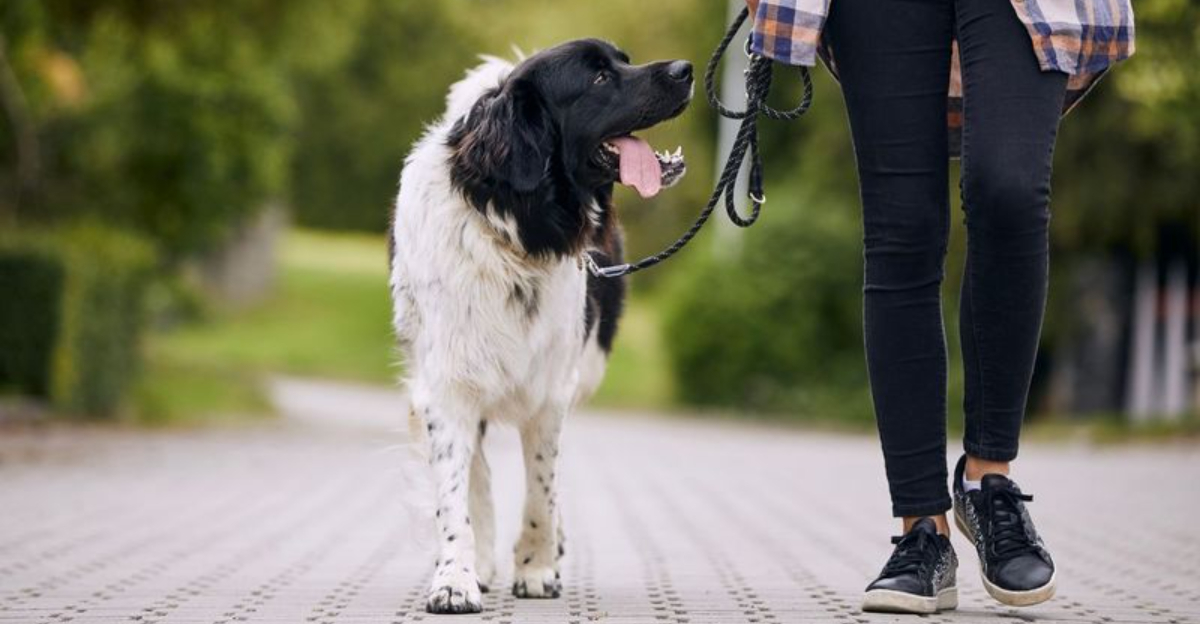
Dogs aren’t just our furry companions – they’re expert observers of human behavior. These intuitive animals pick up on subtle cues we might not even realize we’re giving off, creating a deeper connection between pet and owner.
From your morning yawn to your after-work sigh, your canine friend is constantly reading your body language, routines, and emotions. Yet, despite their attentiveness, there are certain aspects of our human lives that dogs simply tune out.
1. Your Tone Of Voice
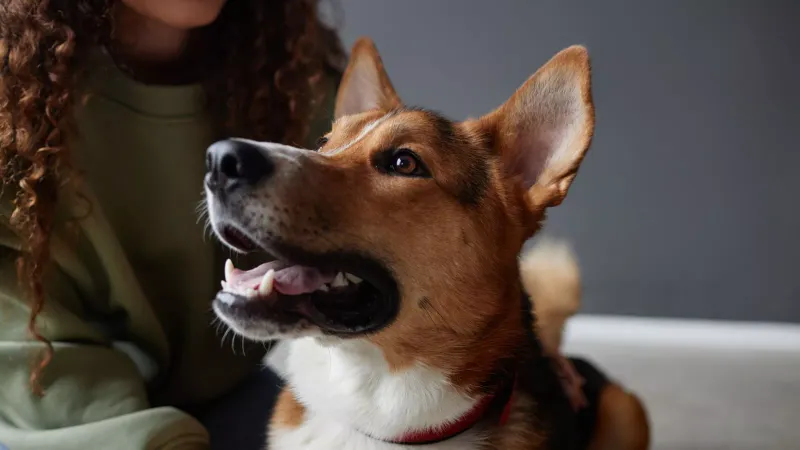
Your four-legged friend doesn’t need a dictionary to understand you. Dogs can distinguish between happy, angry, and sad tones, responding differently to each emotional inflection.
They’re particularly sensitive to high-pitched, excited voices (which is why baby talk works so well). Even when your words say one thing, your tone tells your pup the real story.
2. Your Body Language

Before you even speak, your pup has read your mood. Crossed arms, slumped shoulders, or a bouncy step – your dog notices it all and adjusts their behavior accordingly.
Research shows dogs specifically focus on human faces, watching for subtle changes in expression. They’re particularly attuned to smiles and frowns, often mirroring your emotional state with their own body language.
3. Your Morning Routine
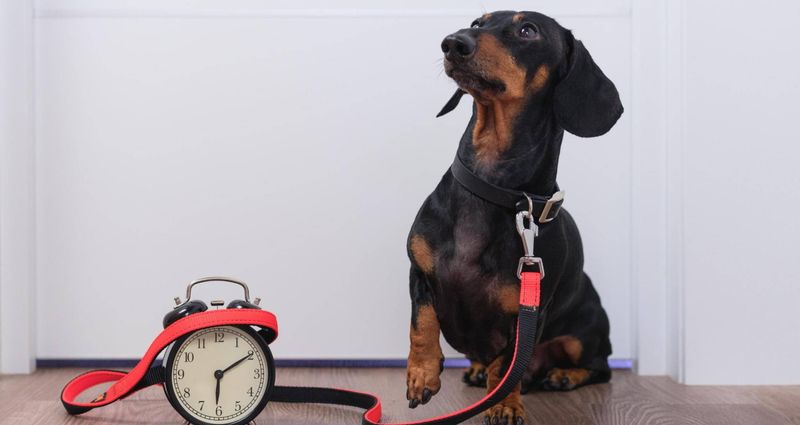
Masters of pattern recognition, dogs track your daily habits with impressive precision. That’s why your pup is already waiting by the door before you’ve even grabbed your keys.
They notice which shoes mean a walk and which mean you’re leaving for work. Many dogs can even tell time in their own way, anticipating your arrival home or mealtime based on subtle environmental cues.
4. How You Smell
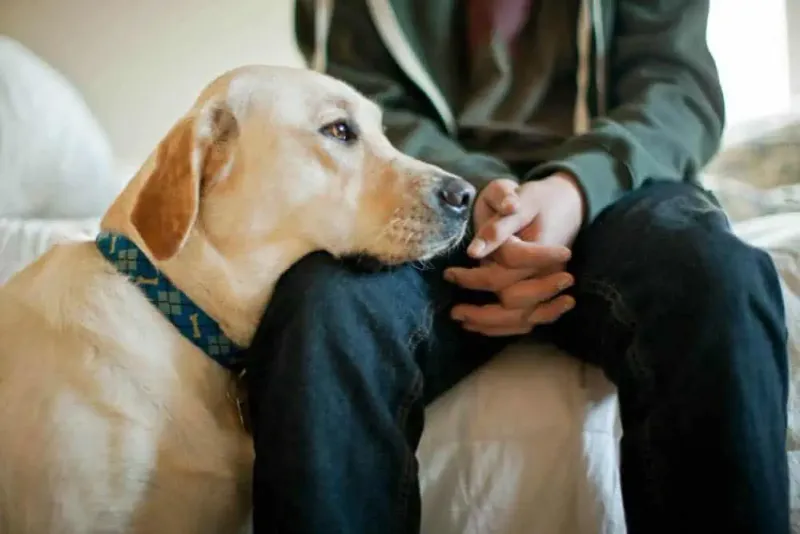
With a nose thousands of times more sensitive than yours, your dog catalogs your unique scent profile. They can detect subtle hormonal shifts when you’re stressed, sick, or even pregnant!
Changed your deodorant? Your dog noticed. Had lunch with another dog? They’ll definitely sniff that out. This remarkable ability helps working dogs detect medical conditions like seizures, diabetes, and even certain cancers.
5. Your Emotions

Ever feel like your dog just knows when you’re sad? It’s not your imagination! Studies confirm dogs recognize human emotions through facial expressions, body chemistry, and behavioral changes.
Many pups respond to their owner’s distress by offering comfort – leaning against you, licking your hand, or bringing a favorite toy. This emotional intelligence strengthens the unique bond between humans and canines.
6. When You’re Coming Or Going

Those legendary welcome-home greetings happen because your dog has been tracking your movements. They recognize the sound of your specific car engine or footsteps long before you enter.
Many dogs begin getting excited minutes before you arrive home. They pick up on subtle time patterns and environmental changes throughout the day. This awareness helps them manage separation anxiety by anticipating your return.
7. Your Breathing Pattern
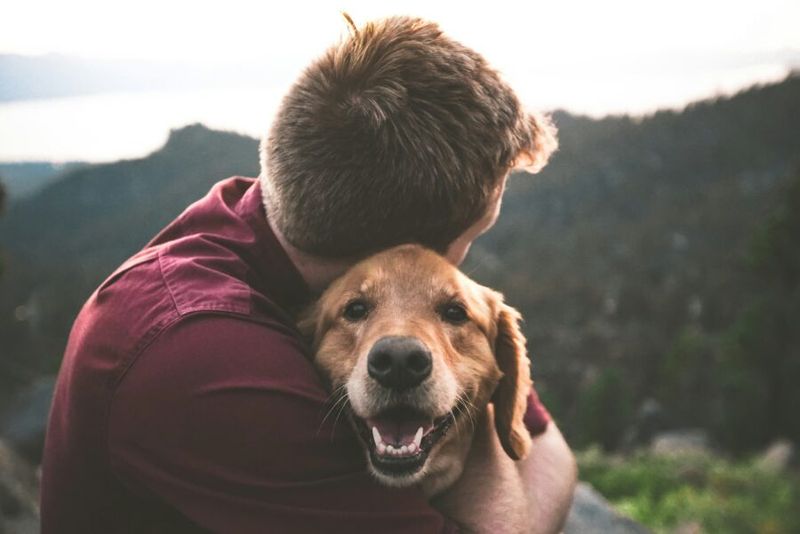
The rhythm of your breath speaks volumes to your canine companion. Dogs notice when your breathing quickens with anxiety or slows during sleep.
Some service dogs are trained to detect changes in breathing that precede panic attacks or health emergencies. Even untrained pets often respond to these subtle changes, becoming more attentive or protective when they sense something’s off with your respiratory patterns.
8. When You’re Getting Ready For A Walk Or Playtime
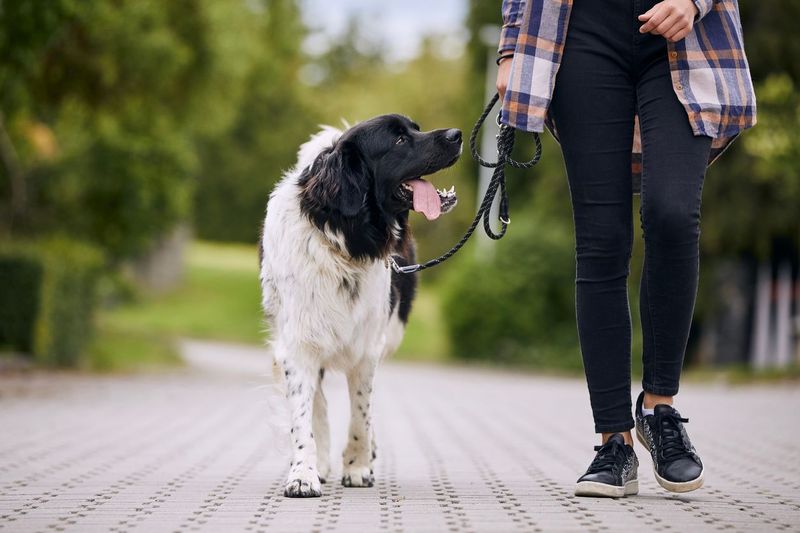
Just reaching for the leash can trigger a canine celebration! Your dog connects specific movements with upcoming activities they enjoy.
They notice when you put on certain shoes, grab their ball, or glance at the clock at walking time. Many dogs learn dozens of activity-specific cues, from the subtle jingle of keys to the specific way you close your laptop when work is done.
9. The Sounds You Make
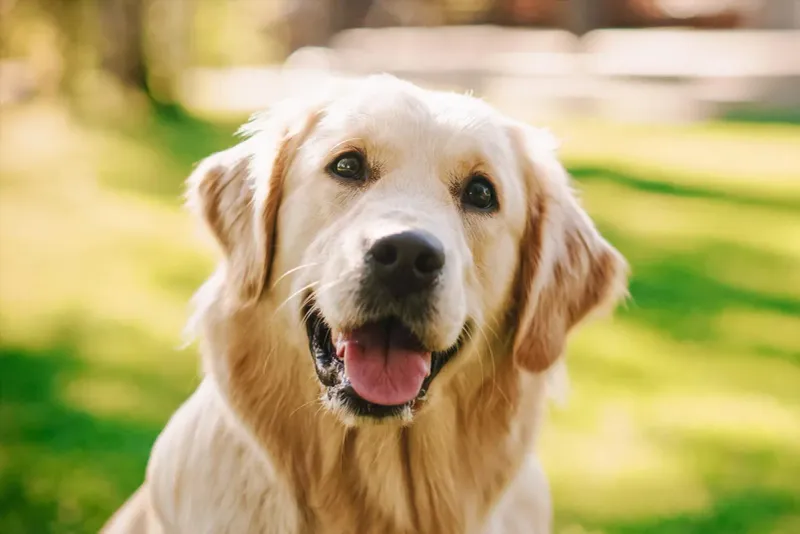
Your dog’s ears perk up at the faintest rustle of a treat bag from across the house. They create mental maps of household sounds, distinguishing between meaningful noises and background hum.
They recognize the difference between your footsteps and a visitor’s. Many dogs even respond differently to the sound of your car versus others on the street, beginning their welcome ritual before you’ve even parked.
10. Your Television Or Computer Screen
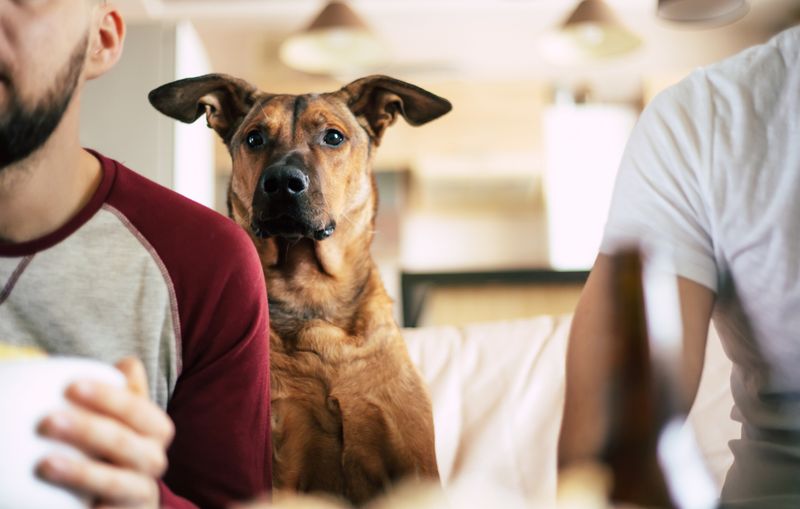
Despite their keen vision for movement, dogs generally don’t process screen content the way we do. Their visual system processes images differently, making most TV shows meaningless flickers.
While some dogs react to animal sounds or certain motion patterns on screens, they can’t follow plots or understand context. Your dog is much more interested in your reactions to the screen than what’s actually playing on it.
11. Your Phone Calls
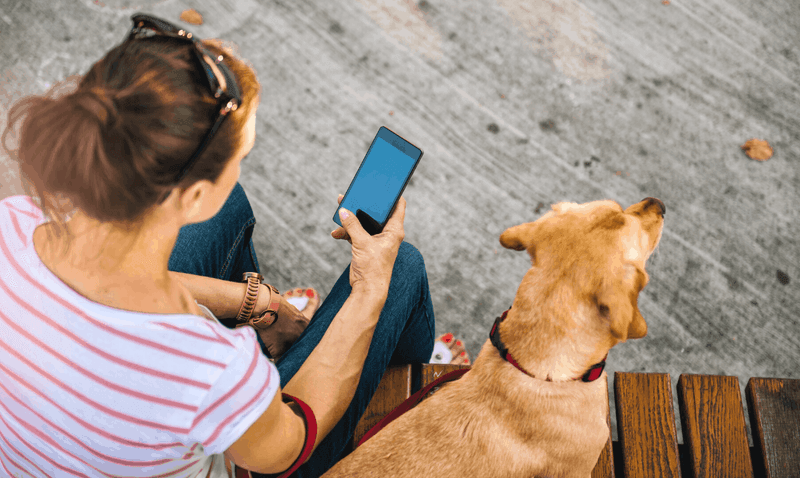
Your lengthy conversation with mom? Completely meaningless to Fido. Dogs typically tune out phone calls after initial curiosity about the strange talking rectangle.
They might respond to your voice or emotional tone during calls, but the concept of remote communication escapes them. That’s why your dog may seem confused when you speak animatedly into your phone with no other human present.
12. Your Outfit Or Clothing Choices
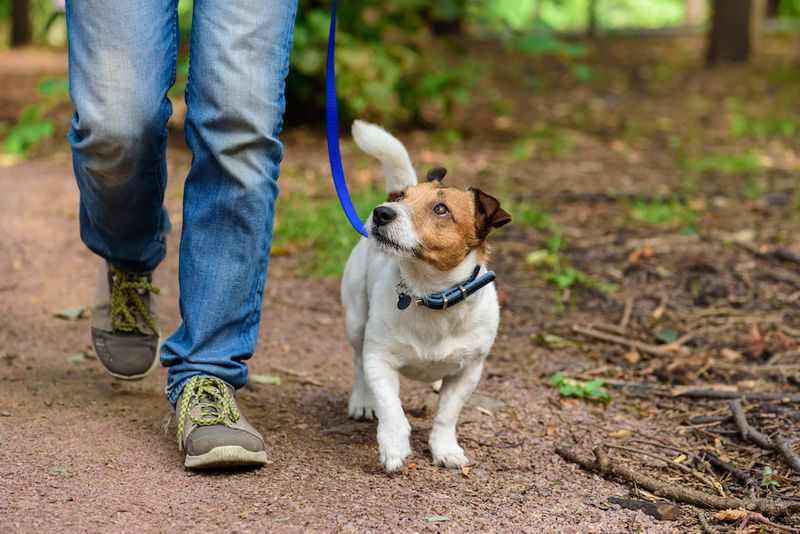
Fashion trends completely escape your furry friend! Whether you’re wearing designer labels or pajamas all day, your dog couldn’t care less about your style choices.
They may notice clothing associated with specific activities (like running shoes meaning exercise time). However, they’re completely indifferent to color coordination, brand names, or whether you’ve dressed appropriately for an occasion – as long as you still smell like you!
13. Background Noise

City dogs quickly learn to filter out traffic sounds, while country pups ignore distant farm equipment. Once your dog determines a sound poses no threat or opportunity, it becomes invisible to them.
This selective hearing explains why your dog can sleep through a thunderstorm but wake instantly at the soft sound of their food bag. Their brains are wired to prioritize biologically relevant sounds while filtering out the rest.
14. When You’re Preoccupied With Work Or Tasks
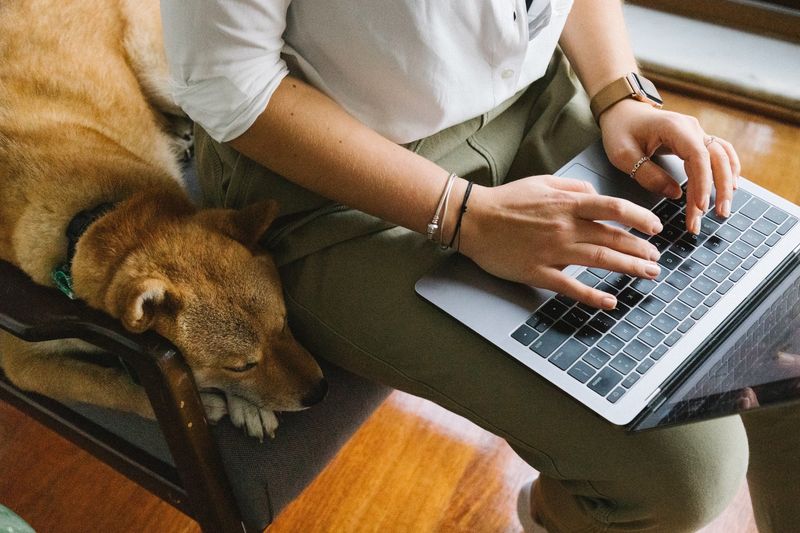
Contrary to popular belief, most well-adjusted dogs don’t mind when you’re focused elsewhere. Once they understand you’re unavailable but still present, many dogs contentedly nap nearby.
They recognize work mode versus playtime, adapting their expectations accordingly. This natural respect for boundaries explains why many dogs settle down with a chew toy when their owners are busy, saving play requests for more appropriate moments.






